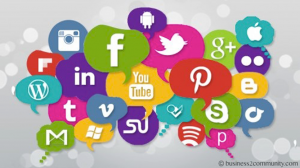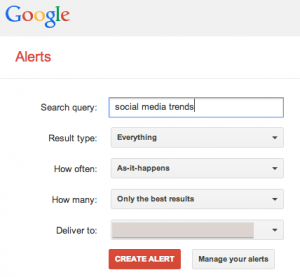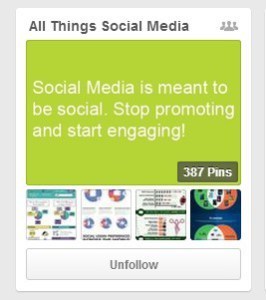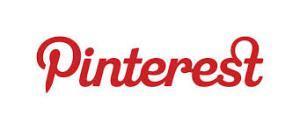Brian E. Boyd Sr.'s Blog, page 14
March 26, 2014
Social Media: – A Force for Good
Like most things in the world, we have the power to use social media for good, or for bad.
 If you’re on Facebook, you’ve probably seen the new fad called “Neknomination”. Neknomination is an online drinking game believed to have originated in Australia, which then spread to the rest of the world. The way the game works is that one person is nominated and they have 24 hours to down an alcoholic beverage while doing something out of the ordinary—the crazier, the better. Then, they nominate two more people to do the same. Not only has this game taken the social media world by storm, but five people are believed to have died already as a result of playing it.
If you’re on Facebook, you’ve probably seen the new fad called “Neknomination”. Neknomination is an online drinking game believed to have originated in Australia, which then spread to the rest of the world. The way the game works is that one person is nominated and they have 24 hours to down an alcoholic beverage while doing something out of the ordinary—the crazier, the better. Then, they nominate two more people to do the same. Not only has this game taken the social media world by storm, but five people are believed to have died already as a result of playing it.
That is an example of social media used for a worldly cause.

In February 2014, a group of South Africans adapted the Neknominate game into a challenge to perform random acts of kindness for others. “Charity Neknomination” was started by Brent Lindeque who said, “Change one thing, change everything” in a YouTube video. Instead of drinking, Brent decided to perform a random act of kindness toward someone in need, while nominating two other people to do the same. This new “Charity Neknomination” has been flooding the country with acts of kindness, big and small.
That is an example of social media used for good.
Through this story we can see that social media is bigger than you or me. If a drinking game can spread through the globe in a few weeks, why can’t faith and acts of kindness spread just as fast? There is a challenge in this story.
Each time you use social media, whether it’s Facebook, YouTube, Twitter, or even Instagram, you have a choice to make. Choose to use social media to change the world and make it a better place—to post only things that resonate with your Christian morals and values, to spread truth and good.
5 Ways to Use Social Media for Good
✓ Share uplifting messages.
✓Compliment someone over post or tweet.
✓ Report offensive sites.
✓Share scripture – this can change a day.
✓Promote legitimate fundraising campaigns.
This post was written by Kirstin Venn. Kirstin is a Social Media Analyst with Media Connect Partners.
Social Media – A Force for Good
Like most things in the world, we have the power to use social media for good, or for bad.
 If you’re on Facebook, you’ve probably seen the new fad called “Neknomination”. Neknomination is an online drinking game believed to have originated in Australia, which then spread to the rest of the world. The way the game works is that one person is nominated and they have 24 hours to down an alcoholic beverage while doing something out of the ordinary—the crazier, the better. Then, they nominate two more people to do the same. Not only has this game taken the social media world by storm, but five people are believed to have died already as a result of playing it.
If you’re on Facebook, you’ve probably seen the new fad called “Neknomination”. Neknomination is an online drinking game believed to have originated in Australia, which then spread to the rest of the world. The way the game works is that one person is nominated and they have 24 hours to down an alcoholic beverage while doing something out of the ordinary—the crazier, the better. Then, they nominate two more people to do the same. Not only has this game taken the social media world by storm, but five people are believed to have died already as a result of playing it.
That is an example of social media used for a worldly cause.

In February 2014, a group of South Africans adapted the Neknominate game into a challenge to perform random acts of kindness for others. “Charity Neknomination” was started by Brent Lindeque who said, “Change one thing, change everything” in a YouTube video. Instead of drinking, Brent decided to perform a random act of kindness toward someone in need, while nominating two other people to do the same. This new “Charity Neknomination” has been flooding the country with acts of kindness, big and small.
That is an example of social media used for good.
Through this story we can see that social media is bigger than you or me. If a drinking game can spread through the globe in a few weeks, why can’t faith and acts of kindness spread just as fast? There is a challenge in this story.
Each time you use social media, whether it’s Facebook, YouTube, Twitter, or even Instagram, you have a choice to make. Choose to use social media to change the world and make it a better place—to post only things that resonate with your Christian morals and values, to spread truth and good.
5 Ways to Use Social Media for Good
✓ Share uplifting messages.
✓Compliment someone over post or tweet.
✓ Report offensive sites.
✓Share scripture – this can change a day.
✓Promote legitimate fundraising campaigns.
This post was written by Kirstin Venn. Kirstin is a Social Media Analyst with Media Connect Partners.
March 25, 2014
Measure Social Media to Craft Effective Strategies
Many people starting out with a new Facebook page, Twitter Profile, Pinboard, Instagram Profile or < insert your social media addiction here> will know that building an engaging, active and interested community doesn’t come easy. In the paraphrased words of Peter Drucker, you can’t measure what you’re doing [on Social], you won’t know what you should or shouldn’t be doing if you’re not taking a look at the impact your tactics produce (a tactic being an activity to achieve a pre-defined goal, for example: the incorporation of trendy images or relevant memes that drive engagement, to achieve the goal of building an active and engaged community).
If you can’t measure it, you can’t improve it. – Peter Drucker
Measuring success on Social Media can be a daunting task, filled with quantitative measures such as likes, comments, shares, mentions, retweets, pins, repins, Klout scores, and follower growth, as well as qualitative measures such as engagement sentiment and quality.
So what exactly does measuring your social media mean? This all depends on what you are aiming to achieve. All metrics are the results of tactics, planned or otherwise, which lead to the achievement of goals on social media.
If your goal is to increase community engagement and interaction, you need to measure follower interactions on a per-post level to identify which pieces of content perform best with your audience. By measuring, you can find the answer to simple questions, like “short posts or long posts?” “Text posts or image posts?” “image posts with text, or without text?” If your goal is to develop brand exposure, you need to measure the sharability of your content by measuring shares on Facebook, retweets on Twitter, and Repins on Pinterest.
Platforms like Facebook, Pinterest, and YouTube make understanding and exporting your numbers a breeze—stats can be exported seamlessly to Excel. While other platforms like Twitter, Instagram, Pinterest, and Goodreads lack detailed analytics and make the process a little tougher to navigate through measurements.
To effortlessly keep track of metrics on a platform and post level, you will need to employ the use of social media analytics tools such as: HootSuite, Sprout Social, and Crowdbooster. These tools will allow you to keep record of your metrics, and in many cases allow for a central location to access your various platforms.
Is measuring and tying metrics to success not your strong suite? We’d love to help your achieve your goals in, and outside of social media. Let’s connect – give us a call at 800.627.1265, tweet @mediacpartners, or drop a line to info@mcpsocial.com
This post was written by Duncan Platt. Duncan is Engagement Manager with Media Connect Partners.
Why measuring your social a few minutes every week will make all the difference.
Many people starting out with a new Facebook page, Twitter Profile, Pinboard, Instagram Profile or < insert your social media addiction here> will know that building an engaging, active and interested community doesn’t come easy. In the paraphrased words of Peter Drucker, you can’t measure what you’re doing [on Social], you won’t know what you should or shouldn’t be doing if you’re not taking a look at the impact your tactics produce (a tactic being an activity to achieve a pre-defined goal, for example: the incorporation of trendy images or relevant memes that drive engagement, to achieve the goal of building an active and engaged community).
If you can’t measure it, you can’t improve it. – Peter Drucker
Measuring success on Social Media can be a daunting task , filled with quantitative measures such as likes, comments, shares, mentions, retweets, pins, repins, Klout scores, and follower growth, as well as qualitative measures such as engagement sentiment and quality.
So what exactly does measuring your social media mean? This all depends on what you are aiming to achieve. All metrics are the results of tactics, planned or otherwise, which lead to the achievement of goals on social media.
If your goal is to increase community engagement and interaction, you need to measure follower interactions on a per-post level to identify which pieces of content perform best with your audience. By measuring, you can find the answer to simple questions, like “short posts or long posts?” “Text posts or image posts?” “image posts with text, or without text?” If your goal is to develop brand exposure, you need to measure the sharability of your content by measuring shares on Facebook, retweets on Twitter, and Repins on Pinterest.
Platforms like Facebook, Pinterest, and YouTube make understanding and exporting your numbers a breeze—stats can be exported seamlessly to Excel. While other platforms like Twitter, Instagram, Pinterest, and Goodreads lack detailed analytics and make the process a little tougher to navigate through measurements.
To effortlessly keep track of metrics on a platform and post level, you will need to employ the use of social media analytics tools such as: HootSuite, Sprout Social, and Crowdbooster. These tools will allow you to keep record of your metrics, and in many cases allow for a central location to access your various platforms.
Is measuring and tying metrics to success not your strong suite? We’d love to help your achieve your goals in, and outside of social media. Let’s connect – give us a call at 800.627.1265, tweet @mediacpartners, or drop a line to info@mcpsocial.com
This post was written by Duncan Platt. Duncan is Engagement Manager with Media Connect Partners.
March 18, 2014
Keeping Up With Social Media Trends
This post was written by Jackie Silva. Jackie is a Social Media Analyst with Media Connect Partners.

With the ever-evolving world of social media, anyone attempting to become, or remain, successful on the Internet has to stay on top of the game. Easier said than done? Not so much. Here are four ways to make sure that the latest social media trends don’t pass you by:
Frequent tech-news blogs & websites. Keep tabs on the most popular social media blogs and websites. These outlets will be the first to talk about the latest changes in social media. Here are some great ones to get you started:
Mashable
TechCrunch
Social Media Examiner
Alltop
If visiting blogs on the regular sounds like a daunting task, use an RSS reader to do the work for you. (RSS: Really Simple Syndication). RSS readers take all of the “feeds” you subscribe to, and “syndicates” (a.k.a. displays) them all in one, like a newsfeed. On most blogs, you’ll find a little symbol like this:
 . Clicking that icon adds that website’s content to your RSS reader of choice. Two of the most popular readers are:
. Clicking that icon adds that website’s content to your RSS reader of choice. Two of the most popular readers are:Feedly
Digg
Make Google Alerts your friend. This great (and free) monitoring tool allows you to enter keywords and receive email updates of the latest relevant Google results for those search terms. You can control the frequency of the updates, getting them even as they happen.*Tip: If you have an overflowing email inbox as it is, make it a friend that only visits once a week.

Take advantage of social media as a news outlet. Platforms like Facebook and Twitter can be your best resource in and of themselves.On Facebook, between “word-of-mouth” information from your friends or pages you follow popping up on your newsfeed, and the new “Trending” feature, you have tons of information on display.*Tip: Become a “fan” of your favorite social media blogs to see their updates.

On Twitter, trending hashtags tell you what people are talking about. And better yet, if you “follow” social media bloggers and websites, you’ll have their latest news at your fingertips.

See? It’s pretty simple. Employ some of these strategies, and you’ll be ahead of the game in no time.
March 17, 2014
Blogging: 101
Getting started: Choose a blogging platform
These days, there are too many free blogging options to list them all. But, some of the most popular, tried-and-true options include:
WordPress
Blogger
Tumblr
The challenge: Choosing a topic
Write about something you’re passionate about! If you take one thing away from this entire post, let it be that. The quality of your content will be drastically better when your heart, and mind, are in it.
Find your niche. While all your blogs posts should be unique, keep your focus within the same overarching topic. Make yourself an expert.
Find your voice. You want your posts to have the same feel and signature style of writing.
The basics: Keep it simple.
When writing posts, be concise. Make your content easy to absorb, so the reader doesn’t get bored or distracted. A few tips:
Break up large blocks of text and keep posts at 500-600 words or less.
Make bullet points your friend.

IMAGES! People are extremely visual. Whenever possible, use diagrams, pictures, drawings, in lieu of words.
Don’t over-do it. One to two new blog posts a week is a good target number.
Stay organized.
Create a simple editorial calendar. Use this to keep track of your blog topics and posting schedule. You want to make sure you continually put out fresh, new material.
Encourage interaction.
Make sure readers can comment on your posts, and respond back to comments whenever possible. And don’t be afraid to ask for feedback.
For extra interaction, find blogs with common interests and offer to guest blog for them, and vice versa.
Take advantage of social media.
Cross-promote! Share your blog across your other social media channels.
Include social media “share” buttons so readers can share your blog posts on their own social profiles.
PROOFREAD.
I can’t stress this enough. Spell check, re-read, and even have another set of eyes check it out as an extra measure before you post. Both you and your blog’s credibility (and reputation) depend on it!
March 13, 2014
Beginner’s Guide: 10 Pinterest Tips for Faith-Based Businesses
Pinterest is a pinboard-style photo-sharing website that allows users to create and manage theme-based image collections.
Though many people use Pinterest for personal reasons, it can be a very effective marketing tool for your business. The learning curve is small (just like any platform), but once you get the hang of it, it’s a fun and easy way to promote your brand, expand your social reach, and drive traffic to your website.
Here are 10 ways to use Pinterest effectively for your business.
1. Set up a Business Profile
- Pinterest has a “join as a business” option to help people discover your business and share it with others.
2. Choose a Name, Profile Image, and Bio
- Use your company name as your profile name so that users can find your business easily.
- Choose a profile image that represents your company—your logo is a good option.
- Your bio should be a short mission statement of who you are, what your company does, and what you are passionate about.
 3. Create Strategically Named Boards
3. Create Strategically Named Boards
- Start creating boards that are related to your brand, products, or services. Give them a short but catchy name.
- Give your board a well-worded description.
- Choose a cover image for that board that best describes the board’s theme as a whole.
- As a faith-based organization, you may want boards that target your faith audience.
4. Pinning 101
- Pins are pictures you pin to your boards, find pins that relate to your board topic and start pinning them. Each pin needs a good description. Why? Choosing strategic keywords is essential. When users search specific keywords, you want your pin to be the one that they see.
- Using pictures off your other social media platforms and website is a good start.
5. Repin
- To repin means to “pin” someone else’s image onto your own board. Pinterest is all about repining and this ensures that you always have new and relevant content to share.
- Add links to your images with your products, services, website pages, and other social media platforms and watch your website traffic grow.
- Help your Pinterest page grow by adding a “Pin It” widget to your website. http://business.pinterest.com/widget-builder/#do_pin_it_button
7. Followers and Following
- When you first start using Pinterest, follow all the people that like and repin your pins to get a sizeable database of followers.
- People who repin your pins are likely to have boards relating to your line of business – go check out their boards and maybe repin a few of their pins.
- Find people who have a passion for the same industry as yours and follow them.
- Promote your Pinterest page from your other platforms with a trackable link.
8. Promote Your Brand
- Show images that relate to your brand.
- Post pins of helpful articles that people will appreciate.
- Link to your website wherever you can and get your employees to share and promote your Pinterest page.
- The faith community on Pinterest is huge, so take advantage of scripture-based pins and other popular Pinterest faith trends.
10. Analytics
- Use analytical tools to track just how much influence and traffic you have and where you can improve, as well as what kind of content works well and what kind doesn’t.
Over 70 Million people use Pinterest – that’s 70 Million people you could be reaching. So, if you aren’t taking advantage of Pinterest, get an account, grab a board, and get to pinning!
March 10, 2014
The BIG Difference between Millennials and Generation C
This post was written by Eileen Perez. Eileen is a Social Media Analyst with Media Connect Partners.
In Social Media, as in PR, Marketing and Advertising, it’s important to know your audience. We have terms for each demographic: Mommy Bloggers, Baby Boomers, Empty Nesters, Millennials, and now Generation C. You might be thinking, “I know Gens X and Y, but who and what is Gen C?” We understand that this can be a little confusing, so here’s the breakdown:
Defining Millennials
Like Baby Boomers, Millennials are tied to their demographic by age. A true Millennial was born sometime between the late 80s and late 90s. They are constantly engaged with technology. Today, you see Millennials flood the internet with selfies, pictures of their food, and take to their online communities for validation and recommendations. Interestingly enough, Millennials are no longer engaging as frequently on the social powerhouse known as Facebook. Although the majority of them are still on Facebook, this demographic has migrated to more visual and instant platforms, such as Instagram and Vine. Popular Millennials today include sStars Beyoncé, The Kardashians, and Lady Gaga, as well as Justin Bieber and Miley Cyrus. Generally, nostalgia for Millennials includes watching reruns of The Fresh Prince of Bel Air, reading Harry Potter and listening to Nsync, The Backstreet Boys and Blink-182.
Who is Generation C?
Generation C is a little trickier to define. One school of thought suggests that Generation C is just another term for Millennials – people between ages of 18 and 29. Another (and a more accurate one in our eyes) is that the “C” stands for “connectivity” or “content”. This makes Generation C much larger than Millennials. Generation C is mostly defined as a psychographic group, meaning that this actually encompasses people who are outside of the Millennial demographic, such as highly-interactive empty-nesters and baby boomers. Gen C-ers share the need to constantly stay connected like Millennials, and often share their own content on social networks. The most popular social network for Gen C is Facebook. Popular Generation C-ers include George Takei, Patrick Stewart and Jimmy Fallon. While this definition of Generation C might seem broad, it needs to be thought of differently than the standard age category.
The reality is that most tech-savvy Millennials can be considered Generation C-ers, since they grew up in the age of the internet. We understand – it’s easy to confuse the two! We hope the difference between Millennials and Generation C makes sense.
Now we ask, which demographic do you fall under?
March 5, 2014
How To Pray In 140 Characters
 When it comes to praying, more is better, right? More words spoken means more thought put into it. More time praying means more sincerity to the prayer. More is better, right?
When it comes to praying, more is better, right? More words spoken means more thought put into it. More time praying means more sincerity to the prayer. More is better, right?
Let’s be honest, how much of our prayers are wasted with unnecessary words? We won’t argue if “more is better” when praying, but if you’re someone who gives a prayer for fifteen minutes, then Twitter may not be for you. But it doesn’t have to be that way. Here are some things to keep in mind when trying to pray on a platform that only gives a small window of time – 140 characters to be exact.
Grammar is thrown out the window. Just browse Twitter for a few minutes and you can quickly see that it’s widely accepted to have poor grammar on Twitter. Instead of writing out every. single. word., people use abbreviations of their words and sentences to get the point across. For example, “Hi and thank you for retweeting my post. God bless you” can more concisely be typed, “Hi. Thx for RT. God bless U.” Is it perfect? No, but that’s Twitter.
It’s quality, not quantity. No longer are the days where we were given 1,000+ word research paper assignments and had to stretchhhhhhhhhhhh our words to hit that minimum. (Did that bring back some painful memories of college?) In fact, with Twitter it’s the opposite. With such a strict limitation, a little more thought needs to be put into how you can pray for someone in 140 characters. Losing unnecessary “filler” words leaves us with only the most important words for those needing prayer.
Use other resources if needed. If the advice above still leaves you puzzled on how to pray using 140 characters, then a backup plan may be required. There’s nowhere that says we can’t use other resources and techniques to portray our thoughts. For example, if you have a more detailed prayer available on a website, feel free to tweet that link to your follower for extra context. Or instead of writing out an entire Bible chapter or multiple versus then just reference them like “Gal 2:20.”
Pray before tweeting. If you’re ready to respond to a prayer request and your mind goes blank, don’t fret. Don’t stress too much about typing a prayer or knowing what to say in 140 characters – we know it’s difficult. Instead of sending a cookie-cutter tweet, pray first instead. Make sure you are connecting with God to see if He gives you specific Scripture to share or the perfect words for the situation.
Since God has promised that He hears every prayer of ours then it doesn’t always have to come through our fingertips. He hears every single prayer for ourself and others, down to each 140 characters.
March 4, 2014
MCP South Florida Hosts The Tulsa Team
This post was written by Jordan Moran. Jordan is a Social Media Analyst with Media Connect Partners, Tulsa.
Media Connect Partners, LLC is a social media agency that started in 2007. Our original concept allowed for remote at-home offices in North Carolina, New York, Oklahoma, Nevada, and Florida. As we’ve grown and expanded to Asia and Africa, MCP opened its first brick and mortar office on December 2013 in Pompano Beach, Florida. I was able to visit for the first time last week, and I must say – it’s much sunnier than our Oklahoma office!
If you’re in the Greater Ft. Lauderdale, Florida area, swing by our office anytime! Find us at The Forum Building in Pompano Beach:
600 S.W. Third Street, Ste 4500, Pompano Beach, FL, 33060
+1.800.627.1265
Brian E. Boyd Sr.'s Blog
- Brian E. Boyd Sr.'s profile
- 5 followers









